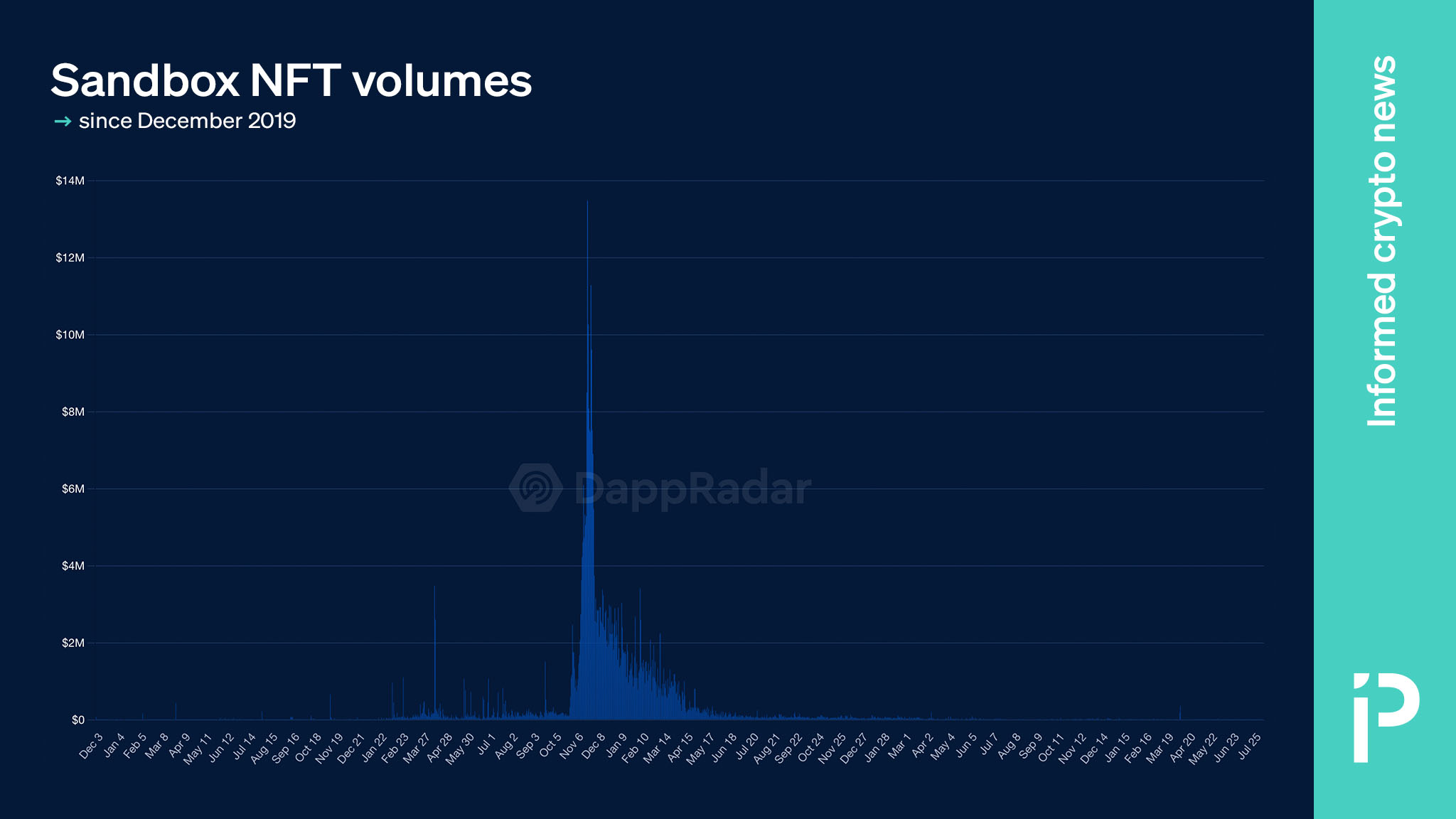The metaverse was meant to herald a bright new future for humanity. With none other than Mark Zuckerberg at the helm, it was supposed to welcome five billion users and grow to $13 trillion, according to researchers at Citi.
Unfortunately, it appears that these analysts — and Metaverse cheerleaders — were getting a little ahead of themselves.
Zuckerberg’s metaverse division at Meta (formerly Facebook) lost $4.5 billion last quarter alone, adding to its lifetime, $46 billion-and-counting metaverse losses. His flagship metaverse game for adults, Horizon Worlds, is embarrassingly popular with children.
Similarly, the crypto metaverse industry — at least when measured using the prices of assets like land parcels, metaverse currencies, and in-world characters — has all the characteristics of a dazzlingly popped bubble.
Decimated digital land and asset prices
Consider The Sandbox, a metaverse once worth over $7 billion. As of August 8, its transaction volumes per DappRadar were down 99.9% from its 2022 highs of $117 million, to less than $8,000.
Sandbox total volumes since February 2021.
Zooming in on The Sandbox’s non-fungible token (NFT) sales doesn’t provide any redemption. Its NFTs traded $10.2 million on November 24, 2021 alone. On any average day this August, NFTs from those collections traded less than $10,000. That’s a decline of over 99.9%.

Sandbox NFT volumes since December 2019.
Then there’s, Decentraland, one of the oldest crypto metaverses. Its daily transactions have declined 99.9% from $2.5 million on November 29, 2021, to less than $5,000 on an average day this month.

Decentraland daily transactions since December 2019.
Other metaverse lands have suffered similar humiliation. Axie Infinity trading volumes are down 99% from nearly $1 billion on September 30, 2021, to less than $2 million today. Metaverse transactions are down 99% from 672 on April 6, 2022, to less than five on average this month. League of Kingdoms transactions are something of an outlier, down a ‘mere’ 90% from their March 19, 2022, all-time highs.
By almost any measure, whether by unique active wallets, NFT floor price, land parcel resales, skin values, or in-game actions, crypto metaverses are less popular almost without exception than in 2021 and 2022.
Read more: The NFT market bubble has popped and we’ve got the charts to prove it
Metaverse currencies and governance tokens down 90%
Following the ICO model that began with MasterCoin and NextCoin in 2013, many crypto metaverses sold a proprietary token to serve as an in-game currency and governance token. Almost all of these metaverse tokens are, like user engagement statistics within digital worlds, down at least 90% from their highs.
A chart of various metaverse currencies from mid-November 2021 to today shows declines exceeding 90%. Decentraland’s MANA, Axie Infinity’s AXS and SLP, The Sandbox’s SAND, Yield Guild Games’ YGG, Vulcan Forged’s PYR, Metahero’s HERO, GensoKishi Metaverse’s MV, DeFi Land’s DFL, and NFT World’s WRLD have all declined over 90% since mid-November 2021.

Metaverse currencies since November 2021.
Despite two years of decay, there are still believers in the metaverse — especially Bloomberg’s #3 ranked billionaire, Mark Zuckerberg. With 10X more wealth personally than the combined market capitalization of all CoinMarketCap-categorized metaverse tokens, Zuckerberg and his Reality Labs division at Meta are seemingly undeterred in their commitment to making Horizon Worlds a success.
As with any bubble-popped industry, there will be rare survivors. Even eBay and Amazon emerged from the dot-com bubble as victors. Generally speaking, the combined market capitalization of over 100 CoinMarketCap-categorized metaverse assets has declined from $50 billion on November 25, 2021, to $16 billion.
If this crypto sector is to stage a comeback, it will certainly be a long journey.

